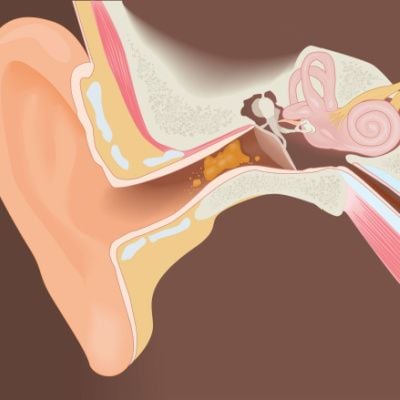 Understanding Earwax (Cerumen): What You Need to Know
Understanding Earwax (Cerumen): What You Need to Know
Earwax, medically referred to as cerumen, is a natural and waxy substance produced by the ear to protect and maintain the health of the ear canal. It plays a crucial role in safeguarding the delicate structures of the ear and facilitating its self-cleaning process. In this article, we'll delve into the nature of earwax, its functions, and how to manage it effectively.
The Composition of Earwax:
Earwax is a mixture of skin cells, hair, secretions from ceruminous (wax-producing) glands, and oily or waxy materials. It can vary in color and consistency from person to person but is typically yellowish-brown and has a slightly sticky or waxy texture.
Functions of Earwax:
Earwax serves several important functions within the ear:
1. Protection: It acts as a protective barrier, preventing debris, dust, and foreign objects from entering the ear canal and potentially causing damage or infection.
2. Moisturization: Earwax helps moisten the ear canal skin and prevents it from becoming dry, itchy, or prone to infection.
3. Self-Cleaning: The ear has a natural cleaning mechanism that gradually moves earwax and trapped particles from the ear canal to the ear's opening. This self-cleaning process is designed to keep the ear clear of excess wax.
Types of Earwax:
Earwax can be classified into two primary types based on its composition:
1. Wet Earwax: This type is more common and is characterized by moist, sticky, and brown earwax. Wet earwax is associated with a higher likelihood of body odor due to its production of odor-causing chemicals.
2. Dry Earwax: Dry earwax is typically light in color, flaky, and less sticky. It is more prevalent in people of East Asian descent.
Earwax Impaction:
In some cases, earwax can become impacted, accumulating and hardening in the ear canal. Earwax impaction can result from using cotton swabs, hearing aids, or earplugs that push the earwax deeper into the ear canal. Symptoms of earwax impaction may include:
- Earache or pain
- Hearing difficulties
- Tinnitus (ringing in the ears)
- Vertigo or dizziness
- Coughing or a sensation of fullness in the ear
Managing Earwax:
If earwax impaction occurs or you experience discomfort or hearing problems due to earwax, it's essential to manage it effectively. Avoid using cotton swabs, hairpins, or other objects to remove earwax, which can push it deeper into the ear canal or cause injury.
Instead, consider the following approaches for managing earwax:
1. Over-the-Counter Drops: Special earwax softening drops are available over the counter. These drops can help soften the earwax, making it easier to come out naturally.
2. Ear Irrigation: An earwax removal kit, available at pharmacies, can gently irrigate the ear canal with warm water. This can help dislodge softened earwax.
3. Seek Professional Help: If earwax impaction is severe or you have a history of ear problems, consult an ENT specialist or healthcare provider. They can safely remove impacted earwax using specialized instruments and techniques.
Earwax is a natural and beneficial substance that helps protect and maintain the ear's health. It's essential to understand the role of earwax, avoid improper removal methods, and contact The Head and Neck Center, P.C when necessary to ensure ear health and hearing quality.
Disclaimer:
The information on this website is provided for educational and information purposes only and is not medical advice. Always consult with a licensed medical provider and follow their recommendations regardless of what you read on this website. If you think you are having a medical emergency, dial 911 or go to the nearest emergency room. Links to other third-party websites are provided for your convenience only. If you decide to access any of the third-party websites, you do so entirely at your own risk and subject to the terms of use for those websites. Neither The Head and Neck Center, P.C, nor any contributor to this website, makes any representation, express or implied, regarding the information provided on this website or any information you may access on a third-party website using a link. Use of this website does not establish a doctor-patient relationship. If you would like to request an appointment with a health care provider, please call our office at (610) 691-2552.

 Understanding Earwax (Cerumen): What You Need to Know
Understanding Earwax (Cerumen): What You Need to Know